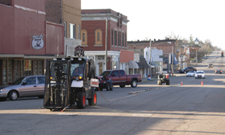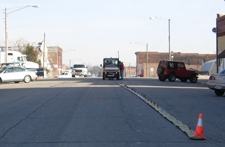Geological Survey receives grant to advance underground-imaging techniques
LAWRENCE—The Kansas Geological Survey at the University of Kansas has been awarded a $650,000 grant from the company XRI Geophysics to improve on technologies used to detect underground voids and faults, to determine the fitness of earthen dams and levees, and in other endeavors.
 “With this funding we will continue to advance seismic-imaging technologies conceived and developed at the KGS since the late 1990s,” said Rick Miller, KGS senior scientist and geophysicist.
“With this funding we will continue to advance seismic-imaging technologies conceived and developed at the KGS since the late 1990s,” said Rick Miller, KGS senior scientist and geophysicist.
XRI, headquartered in Vicksburg, Miss., is a private geoscience company that provides services and support to industry and governmental entities for research and advancements related to near-surface geophysics, geology, hydrology and energy resources.
Geophysics researchers at the KGS study the physical properties of the earth, including its electrical, gravitational, magnetic, radioactive and seismic characteristics. The grant will fund further development of noninvasive, high-resolution seismic methods used to characterize rocks and structures in the shallow subsurface — down to about 300 feet deep.
 Using seismic-characterization technologies, sound waves are created and measured as they travel through or around underground structures and sediments. Because sound waves travel through different rock types, sediments and fluids in distinct ways, the measurements can be used to interpret various rock conditions and properties.
Using seismic-characterization technologies, sound waves are created and measured as they travel through or around underground structures and sediments. Because sound waves travel through different rock types, sediments and fluids in distinct ways, the measurements can be used to interpret various rock conditions and properties.
Seismic characterization has a number of applications in engineering, construction, archeological studies, groundwater investigations, public safety and the identification of such hazards as abandoned mines, caves, fractures and voids that could lead to sinkholes.
Although seismic reflection has been used for several decades, commonly in oil and gas exploration, the KGS has made technological breakthroughs in the past 10 years that overcome limitations of traditional imaging tools used in the shallow subsurface.
“Our objective is to further improve operational efficiency, location and property measurement accuracy, and confidence as well as reduce false positive anomaly detections and allow for near real-time results,” Miller said.
The KGS researchers use a specially outfitted, self-contained vehicle that incorporates an active sound energy source, towed sensors, and a recording and analysis capability.